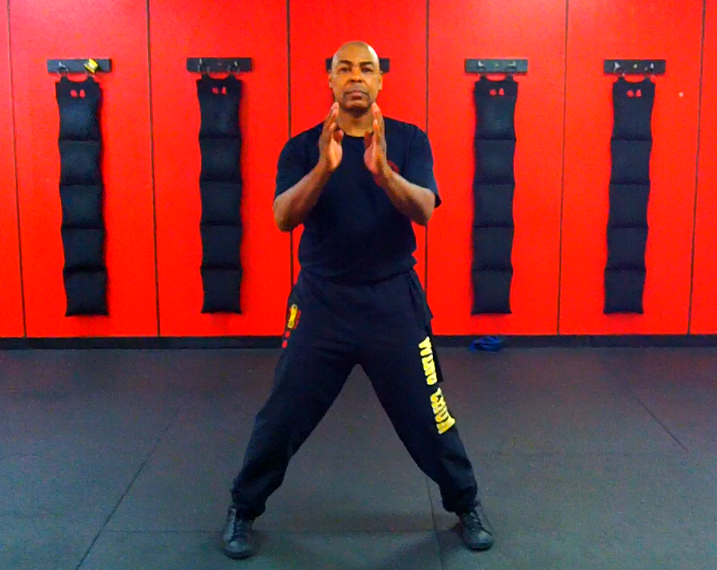The Role of Forms in Wing Chun: Understanding the Siu Nim Tao, Chum Kiu, and Biu Jee
By Maurice Novoa a master under the Yuen Kay Shan, Ip Man and Pan Nam lineages.
Introduction:
Forms, also known as “katas” or “taolu,” play a crucial role in martial arts training, including the Wing Chun style. In Wing Chun, forms serve as a means of practicing and refining techniques, developing muscle memory, and deepening understanding of the system’s principles.
Three primary forms in Wing Chun are Siu Nim Tao, Chum Kiu, and Biu Jee. Each form has its own significance and contributes to the overall development of a Wing Chun practitioner. Let’s explore the role of these forms.
I. Wing Chun’s 1st Form Siu Nim Tao (Little Idea)
Siu Nim Tao, or “Little Idea Form,” is the foundational form in Wing Chun. It serves multiple purposes, including the development of chi energy and training in single-arm chi sau.
Chi Energy Development: Siu Nim Tao focuses on cultivating and harnessing chi energy within the practitioner’s body. Through slow and deliberate movements, practitioners learn to cultivate and direct their energy, enhancing their overall body awareness and sensitivity.
Single-Arm Chi Sau Training: Siu Nim Tao provides a platform for training in single-arm chi sau, which is a form of sticky hand training. Practitioners practice sensitivity, coordination, and controlling an opponent’s energy using a single arm.
Structure and Technique Refinement: Siu Nim Tao emphasizes the correct body structure, alignment, and technique execution. Practitioners learn to maintain a solid and balanced stance, promoting stability, power generation, and efficient technique execution.
Siu Nim Tao serves as the foundation for Wing Chun practitioners, helping them develop essential skills such as energy cultivation, sensitivity, and proper body mechanics. It provides the groundwork for advanced techniques and prepares practitioners for further training in the Wing Chun system.
II. Wing Chun’s 2nd Form Chum Kiu (Sinking the Bridge)
Chum Kiu, also known as “Sinking the Bridge,” is the second form in the Wing Chun system. It focuses on developing mobility, footwork, and techniques for close-range combat and arm-breaking.
Footwork and Body Coordination: Chum Kiu introduces more dynamic footwork patterns, enabling practitioners to move with agility and maintain stability while engaging with an opponent.
Close-Range Techniques: Chum Kiu emphasizes techniques specifically designed for close-quarters combat, including arm-breaking techniques, strikes, and trapping maneuvers.
Bridging the Gap: Chum Kiu trains practitioners to effectively close the distance between themselves and their opponents, enabling them to engage in close-range exchanges and maintain control.
Chum Kiu enhances the practitioner’s ability to control and disrupt an opponent’s structure, while simultaneously enabling them to deliver powerful strikes and execute close-range techniques.
III. Wing Chun’s 3rd Form Biu Jee (Thrusting Fingers)
Biu Jee, the advanced form in Wing Chun, incorporates techniques for emergency situations, explosive power, and elbow strikes.
Emergency Techniques and Recovery: Biu Jee teaches practitioners how to recover from disadvantageous positions and employ techniques that are unexpected and unorthodox, enabling them to regain control in critical situations.
Explosive Power and Energy Projection: Biu Jee focuses on developing explosive power and the efficient projection of energy, enabling practitioners to generate force and deliver devastating strikes.
Elbow Strikes and Advanced Techniques: Biu Jee introduces advanced hand techniques, including powerful elbow strikes that can be devastating at close range.
Biu Jee serves as a bridge between the structured techniques of Siu Nim Tao and the dynamic application of Chum Kiu. It introduces practitioners to advanced concepts and techniques that require quick reflexes, adaptability, and the ability to respond effectively in unpredictable situations.
Conclusion
In Wing Chun, the forms of Siu Nim Tao, Chum Kiu, and Biu Jee play a vital role in the development of a practitioner’s skills and understanding of the system. Each form builds upon the foundation of the previous one, expanding the practitioner’s knowledge, technique repertoire, and ability to apply the style’s principles in various situations.
Through diligent practice of these forms, practitioners can refine their techniques, enhance their understanding of the style’s principles, and progress on their martial arts journey.

